Dumbbell bicep curls are one of the most effective biceps strengthening exercises for building arms that are not only muscular but symmetrical too. This is because you need to lift each weight independently during standing dumbbell curls, which helps to ensure that both of your bicep muscles receive roughly equal work.
This guide shows you how to do curls with the proper form and then sheds light on the common mistakes that lifters make when performing DB curls.
Related: Best back and bicep workout
Dumbbell bicep curl exercise details
- Also Known As: Arm curls, hand curls
- Main Muscles: Biceps brachii
- Secondary Muscles: Brachioradialis, brachialis, forearm flexors
- Exercise Type: Strength
- Exercise Mechanics: Isolation
- Difficulty Level: Beginner
- Equipment Needed: Dumbbells
How to do bicep curls correctly
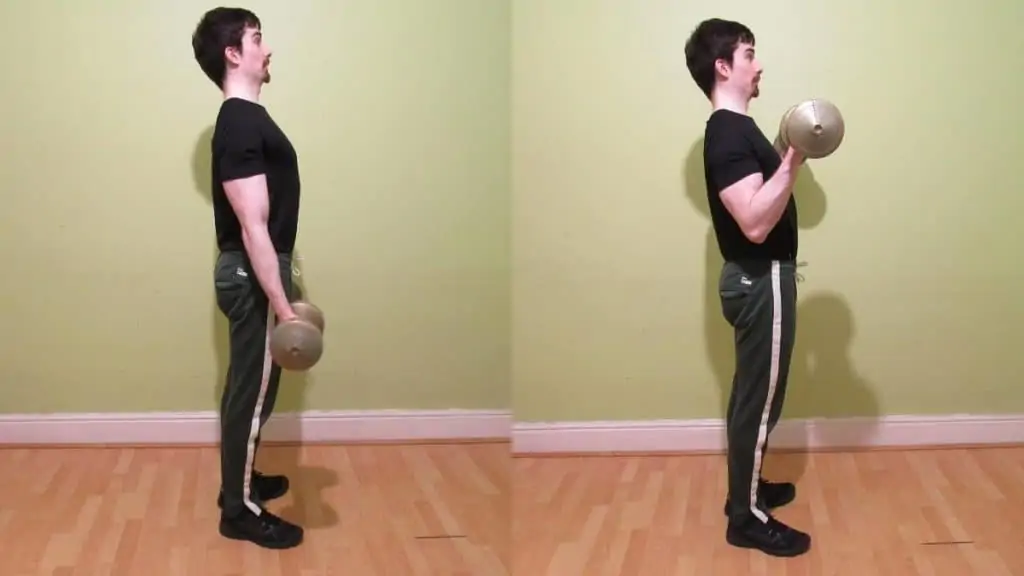
- Grab a pair of dumbbells and hold them by your sides with an underhand grip.
- While keeping your elbows still, curl the weights toward your shoulders.
- Keep curling until the undersides of your forearms forcefully press up against your biceps.
- Hold the contraction for a second and then lower the dumbbells under control until your elbows reach full extension.
- Repeat for 3-5 sets of 6-12 reps.
Common dumbbell curl mistakes
When you’re curling weights and performing dumbbell bicep exercises, there are a few common mistakes that you need to avoid if you want to gain muscle mass and strength while staying safe in the gym.
Using momentum
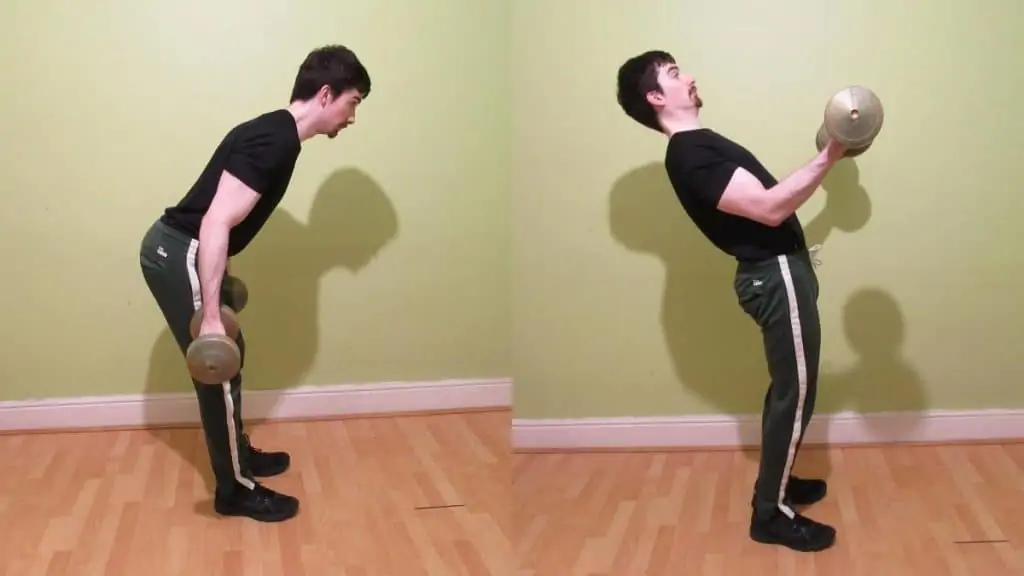
Momentum and the standing bicep curl do not mix.
The DB curl is a pure isolation exercise. As such, you should avoid using your legs, hips, and back to swing the weights up in an attempt to lift heavier dumbbells or perform more reps.
While using the improper curling form may well enable you to exceed the average dumbbell curl weight, the extra resistance won’t be going straight to your biceps. Most of the tension, in fact, will get distributed to the muscles that you’re using to cheat. Therefore, you won’t actually be getting any extra bicep stimulation for your efforts. [1]
Instead, use the proper dumbbell curl form by locking your abs, legs, and glutes in place. This will prevent these body parts from generating momentum while also keeping your core strong, rigid, and ready to curl.
Similarly, when you’re performing bicep exercises at home or in the gym, you need to keep your elbows still during the initial lifting phase of the rep. It’s okay to allow a small amount of shoulder and elbow movement as you contract your biceps (the biceps is a shoulder flexor, after all). However, keep it within reason. A small amount of shoulder flexion goes a long way toward intensifying the peak contraction.
Performing partial reps
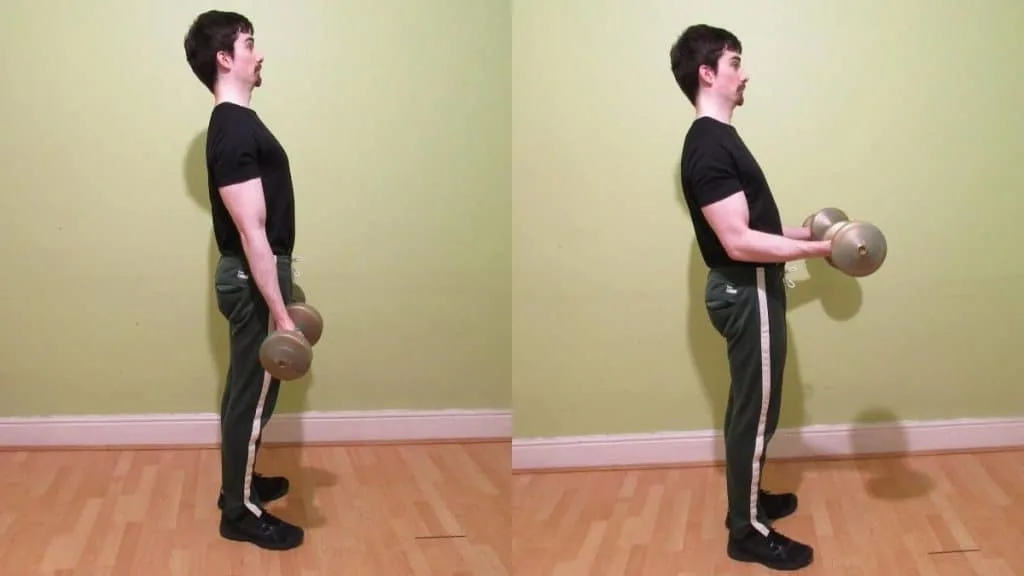
Whether you’re doing extremely difficult or very easy bicep workouts, always use a full range of motion to maximize the effectiveness of stand up bicep curls; never perform partial reps when you have the opportunity to do complete reps.
Doing a full bicep curl means a) lifting the weight until the undersides of your forearms make forceful contact with your biceps and b) lowering the weight until your elbow reaches full extension, which you can do by briefly contracting your triceps at the bottom of the rep.
Performing heavy dumbbell curls like this naturally recruits more muscle fibers and thus leads to greater hypertrophy because a larger portion of your biceps is getting stimulated.
Falling into the half rep trap, on the other hand, not only lowers your bicep activation, it also gives you a false sense of strength. This then leads to ego lifting and puts you at risk of injuries by using the incorrect bicep curl technique to try and perform the heaviest dumbbell curl possible.
Not controlling the weights
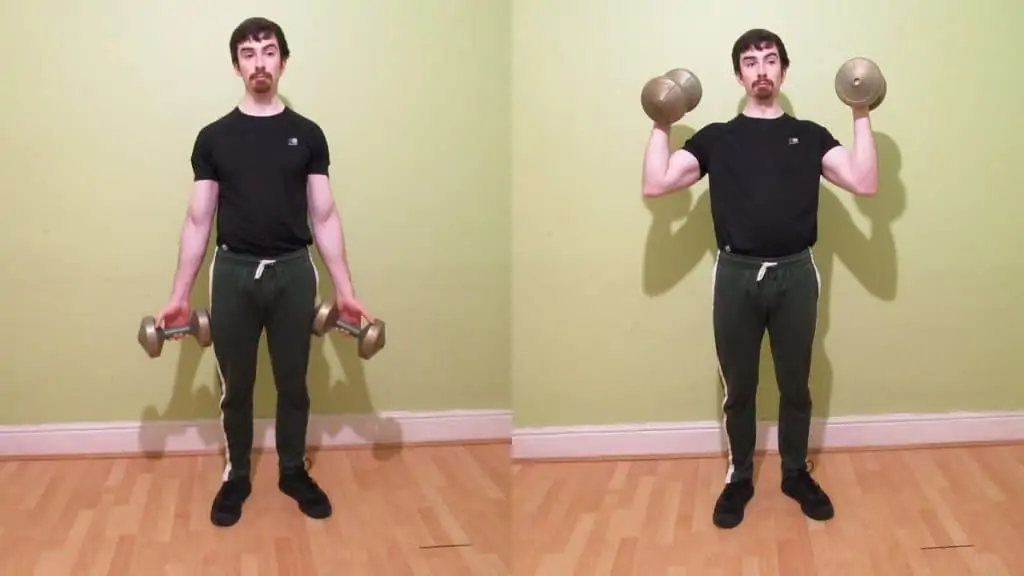
Your biceps should control the weight at all times during a dumbbell arm curl. Avoid just letting the weight drop during the eccentric (lowering) phase of the rep.
Instead, resist the tension of the dumbbell with your biceps by slowing down your reps slightly.
There’s no award for doing the fastest DB bicep curl, so don’t feel that you have to rush your repetitions by letting the weight drop. Lower the dumbbells purposefully by allowing them to stretch your biceps, and you’ll get way more mechanical tension (crucial for muscle growth) while simultaneously sparing your elbows. [2]
Flexing your wrists too much

When you’re performing any kind of weight lifting curls, it’s crucial that you grip the dumbbell tight enough so that you don’t drop it. Yet, you also don’t want your wrists to flex forward too much, as this can make your forearms fatigue prematurely and thus leave your biceps understimulated.
Of course, the forearms are a secondary muscle group in the standing DB curls exercise, so it’s normal to feel a moderate amount of flexor activation. However, you still want to feel the vast majority of the tension in your biceps.
If you struggle to feel your biceps working as much as you’d like during standing bicep curls, try to extend your wrists backward slightly as you curl the weights. While a neutral wrist position is also fine, putting your wrists into slight extension will ensure that your forearms don’t become overly flexed, which in turn means that your biceps will have to do more of the lifting.
At the same time, however, you want to make sure that the wrist extension isn’t excessive so that you don’t hurt your joints. A little goes a long way here.
While performing a biceps superset and similar advanced training techniques can help you to feel your biceps working due to the sheer pump that they induce, no amount of intensity can compensate for poor form. So make sure that you’re not making any of the above mistakes when you do the dumbbell biceps curl.
Dumbbell bicep curl variations
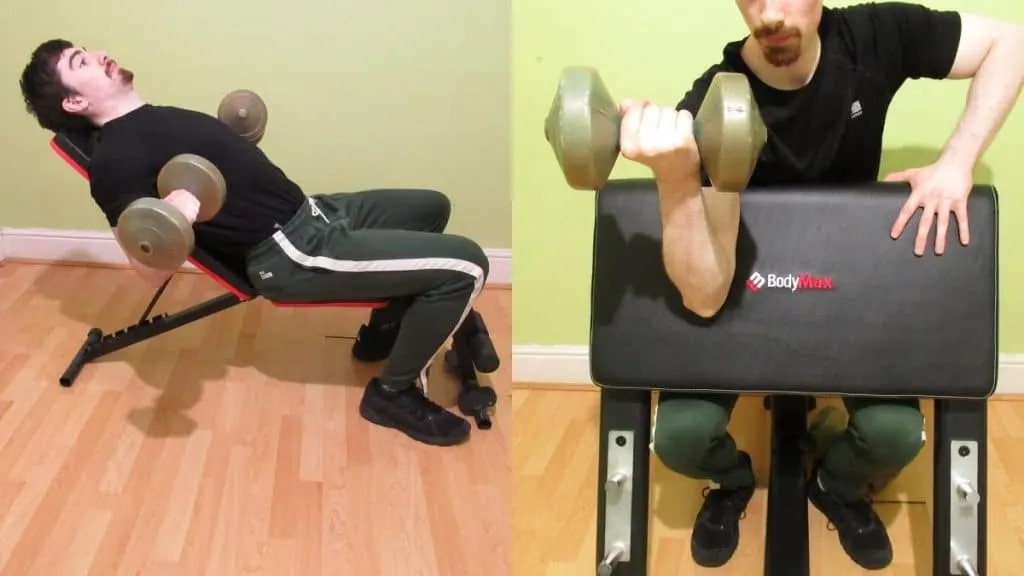
There are over 7 variations of dumbbell bicep curl that you can do to build muscle. Click the links below for a complete guide on each of the different types of dumbbell curls, or keeping reading for a DB curl FAQ.
- Incline dumbbell curl
- DB preacher curl
- Hammer curls
- Spider curls
- Concentration curls
- Zottman curl
- Seated dumbbell curls
- Alternating dumbbell curl
- Bicep curls vs hammer curls
Bicep curl FAQ
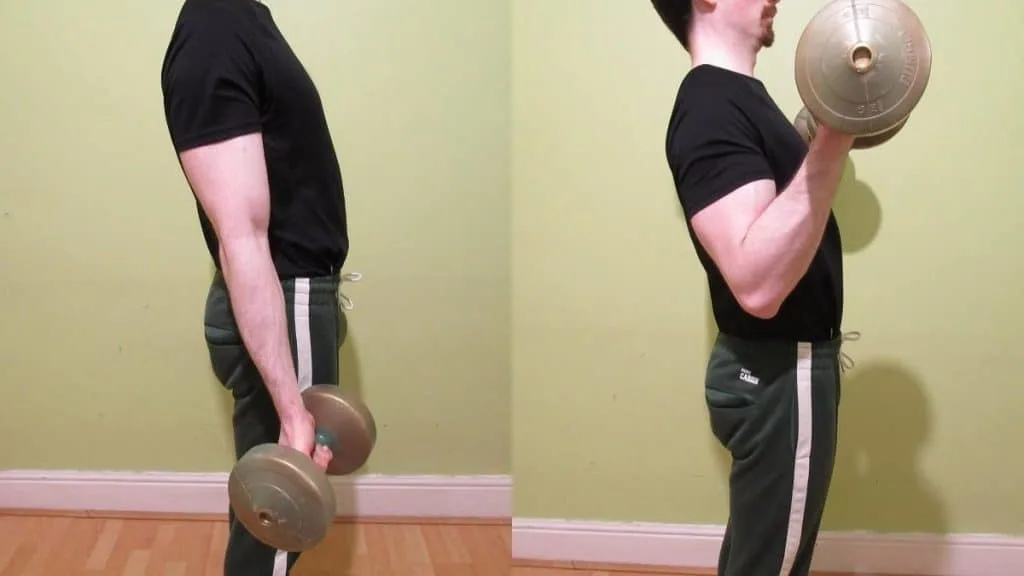
What are bicep curls?
Bicep curls are a resistance training exercise that weight lifters perform to increase the muscle mass and strength of their upper arms. The movement is typically performed with dumbbells but can also be done with other equipment such as barbells (see our barbell curl vs dumbbell curl comparison for more info).
What muscles do bicep curls work?
The standing dumbbell curl primarily works the biceps brachii, which is the muscle on the front of the upper arm. It also trains the brachioradialis, brachialis, and forearm flexors.
What’s the best way to do bicep curls?
The best way to do biceps curls is with dumbbells because it ensures that each of your biceps is getting roughly the same amount of stimulation and thus growing in proportion.
What are the benefits of bicep curls?
The main benefits of bicep curls are increased muscle mass and stronger arm muscles. The bicep curls exercise can also improve your muscular endurance, increase your bone density, and help you to develop a leaner physique by burning calories, especially when performed in a standing position, where more muscles are naturally activated.
Conclusion: How effective are dumbbell bicep curls?

Arm curls are a highly effective muscle-building exercise when you do them with the proper bicep curl form. Besides improving the size of your biceps, standing dumbbell curls also help you to sculpt symmetrical arm muscles by making you lift each weight independently. [3]
The dumbbell bicep curl is also a very versatile movement in terms of application and rep ranges (hence why it features in our bicep workouts for women and men). While sets of 6-12 reps are typically recommended for gaining muscle mass, you can also perform lower reps to gain strength more rapidly. Likewise, you can perform higher repetitions to burn extra calories and increase the time under tension for your biceps.
References
- Fausett, M. (2019, January 23). Form Versus Weight/Momentum. Bodybuilding.Com. https://www.bodybuilding.com/fun/manny1.htm
- Pollen, T. (2019, August 18). The 3 Essential Workout Methods for Muscle. T NATION. https://www.t-nation.com/training/the-3-essential-workout-methods-for-muscle/
- Bevilacqua, A. (2020, January 24). 2 Simple Steps To Keep Your Body Symmetrical. Muscle & Fitness. https://www.muscleandfitness.com/flexonline/training/2-simple-steps-keep-your-body-symmetrical/

